#placestoseeinengland
Photo
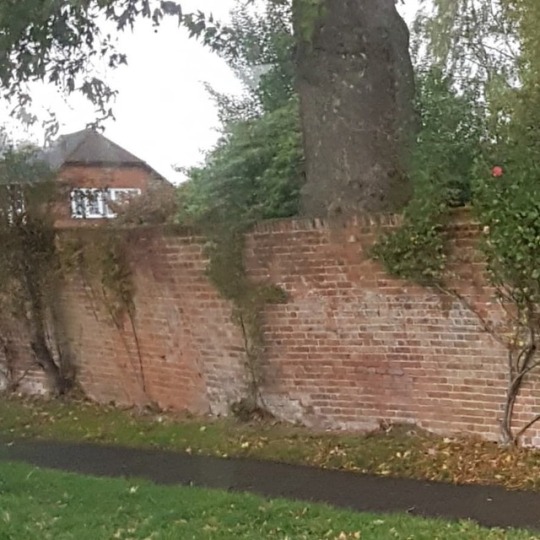
One of the highlights of Farnham is this leaning wall. Known as The Leaning Wall Of Farnham. Located along Weybourne Road. #farnham #leaningwall #surrey #bucketlistplaces #mustseeplaces #placestoseeinengland #thewall (at Farnham) https://www.instagram.com/p/Bo3iiViBdpy/?utm_source=ig_tumblr_share&igshid=1jkiy8mj0s9bn
0 notes
Text
What a Steal!: Stonehenge and the Sale of the Century
The image of Stonehenge provokes many images withing the imaginative mind. Some may envision the towering structures peacefully standing over the British landscape. Others might think back to days of old and try to picture the strange events rumored to have occurred there. Visitors may only groan to think of the lines and crowds on their last viewing. One scene that may not jump to mind is one of hands shooting into the air and hearing a triumphant "Sold!", and yet, this scenario did happen.
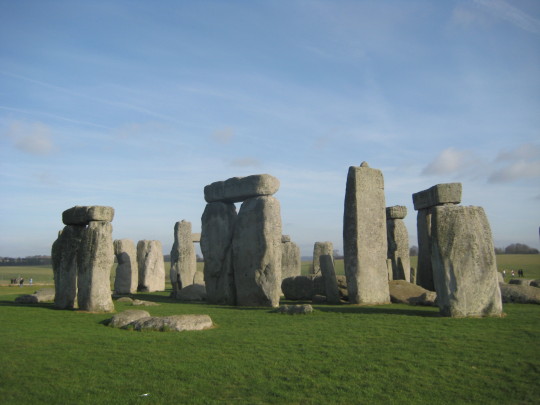
Today Stonehenge is considered one of the most iconic places in the world and in 1986 it was added to the prestigious list of UNESCO World Heritage Sites. But, the history of the stones is shrouded in both mystery and neglect. Estimated to be approximately 5,000 years old, the stone forms were constructed by people that left behind no written records to explain their methods or reasons for assembling the formation. What is known is that it is a prehistoric monument that was built in stages taking approximately 1,500 years to complete.

Image of how Stonehenge would have appeared in 1550 BCE
Given discoveries of bones many believe that the space functioned as a burial site. The stones appear throughout British history and make appearances deep in British literature with stories surrounding it that include King Arthur and other texts written by Geoffrey of Monmouth which were considered to be historic fact for centuries. In the 17th century archaeologist John Aubrey attributed the monument to high druid priests, a belief that was held true by many until the mid-20th century when carbon dating placed the stones in their location over 1,000 years before the Celts inhabited the region. Some believed it was a survivor of the great flood in the Bible, people dug for treasure on the grounds, but amid all the stories what is known is that beginning in the middle ages Stonehenge was privately owned and that by the early 1800s it fell into the hands of the Antrobus family.
The family did not take much interest in preserving their odd site and the stones began a long steady decline into disrepair. Sir Edmund Antrobus resisted all pleas from the British government to sell the land back to them and refused to allow preservationists to lend a hand in keeping the stones intact and safe. During a storm on December 31st 1900 a massive piece of Stonehenge fell and cracked. Hearing about the damage people began to visit the site and started taking pieces of Stonehenge home with them. While it is unsure if it was to make money or to protect the site, in the early 1900s the Antrobus family finally put up a fence and started to charge admission while also finally allowing preservationists to start taking a look at the massive monument.
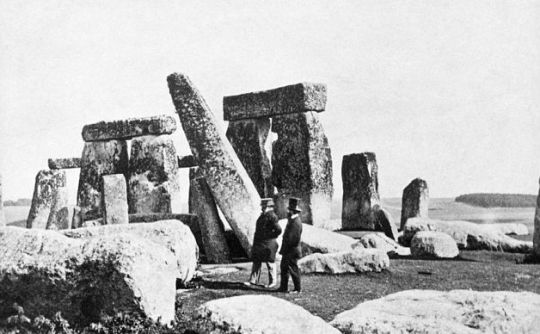
A deeply dilapidated Stonehenge in 1870
Although it was given a glimmer of hope, the state of Stonehenge continued to decline. British training facilities went up in the area and the surge of people, equipment, and aircraft (some of which crashed) continued to take its toll along with visitors who continued to chip away at the structure and submit it to a general feeling of disrespect. Although the future looked bleak for Stonehenge, fortune smiled on the stones at the same time that it turned it's back on the Antrobus family when their last heir was killed in the early months of World War I. With no one to claim the estate, the land was put up for public auction, including Stonehenge.
On September 21st 1915 lot 15, which was made up of Stonehenge and 30 acres of adjoining land, went up for sale at the Palace Theatre in Salisbury. The auction catalog described the parcel as "a place of sanctity dedicated to the observation or adoration of the sun”. By the time lot 15 came up the gathered crowd had grown considerably in size and at 2pm Auctioneer Sir Howard Frank began bidding at £5,000. One man at the auction was Sir Cecil Chubb, a wealthy barrister who was only attending the auction out of curiosity and allegedly because his wife Mary instructed him to go and buy a set of dining room chairs. He watched the bidding and the price increase to £6,500 by local man Isaac Crook. On a total whim Chubb placed a bid for £6,600 (equivalent to £600,000 or $776,628 today). It was done. Chubb would not be returning home with a set of chairs for his wife, he would return to her with the surprise gift of Stonehenge.
Mary was not happy with the purchase.

Sir Cecil Chubb and his wife Mary in 1926
A gift for his wife was probably not the only motivation for Chubb's spur of the moment purchase. When speaking to reporters after the sale he commented “While I was in the room, I thought a Salisbury man ought to buy it.” Being local, it is entirely possible that Chubb may have known the Antrobus family and may have wanted to keep it as a mark of local pride and avoid it possibly being dismantled or moved elsewhere. When asked what he planned to do with his purchase he said that he planned to protect the monument.

Newspaper reporting on the sale of Stonehenge
In 1918, just sixteen days before the end of World War I, Chubb gifted Stonehenge back to the nation stating that "I became the owner of it with a deep sense of pleasure … [but] it has been pressed upon me that the nation would like to have it for its own ...” An official ceremony was held and Prime Minister David Lloyd George granted him knighthood for his generous gift with Chubb becoming Sir Cecil Chubb, First Baronet of Stonehenge. He also earned a new nickname, Viscount Stonehenge. Chubb later had a coat of arms commissioned for him bearing a silver lion paw grasping two branches of mistletoe which was believed to be a sacred plant to the druids said to have once worshiped there. The coat of arms motto read "Saxis Condita", meaning "Founded on the stones".
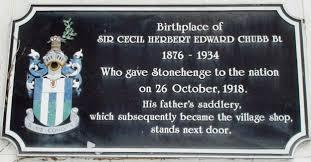
A plaque placed at the birthplace of Cecil Chubb showing his coat of arms
Although he was giving Stonehenge back to Britain, Chubb had some conditions dictating that the monument must be preserved and restriction certain construction on the land. Also decreed by Chubb was that for the admission into Stonehenge the public should not pay "a sum exceeding one shilling" per visit. A separate agreement still honored today stated that local residents would be allowed to visit the site free of charge.
Chubb died on September 22nd 1934 at 58 years of age. 101 years after his purchase Stonehenge remains one of the most recognized sites in the world and welcomes over 800,000 visitors every year.
#husheduphistory#featuredarticles#history#weirdhistory#britishhistory#stonehenge#strangehistory#forgottenhistory#monument#icon#unsolvedmysteries#auction#greatsale#surprise#gift#England#EnglishHistory#placestoseeinEngland#mostvisited#Chubb#saleofthecentury#goodbuy#hometownpride#freeadmission#genorosity#what a steal#forthepeople#mysteriousplaces#amazing
0 notes
Photo
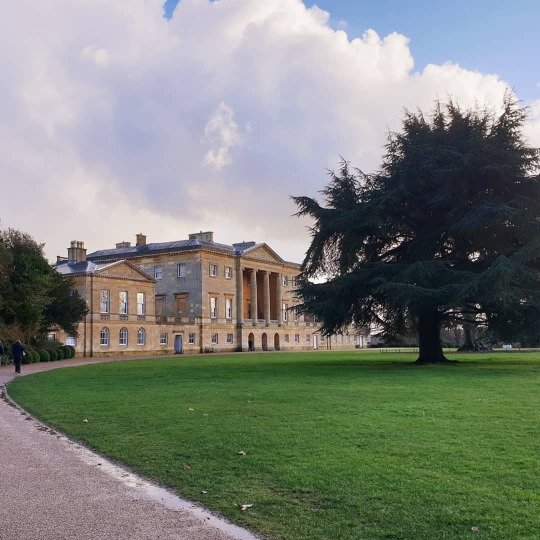
Basildon Park National Trust #palladian #palladianarchitecture #georgian #englishcountryhouse #basildonparknationaltrust #heritageproperty #countryhouse #lordandladyiliffe #restored #revived #georgianarchitecture #georgiangarden #heritagephotography #thisisengland #winterintheuk #visitbritain #placestoseeinengland #placestovisit #britishdayout #daysoutintheuk #travel #pastinthepresent https://www.instagram.com/p/B7eKJusH5eQ/?igshid=1dt3wo1pi8ou6
#palladian#palladianarchitecture#georgian#englishcountryhouse#basildonparknationaltrust#heritageproperty#countryhouse#lordandladyiliffe#restored#revived#georgianarchitecture#georgiangarden#heritagephotography#thisisengland#winterintheuk#visitbritain#placestoseeinengland#placestovisit#britishdayout#daysoutintheuk#travel#pastinthepresent
0 notes